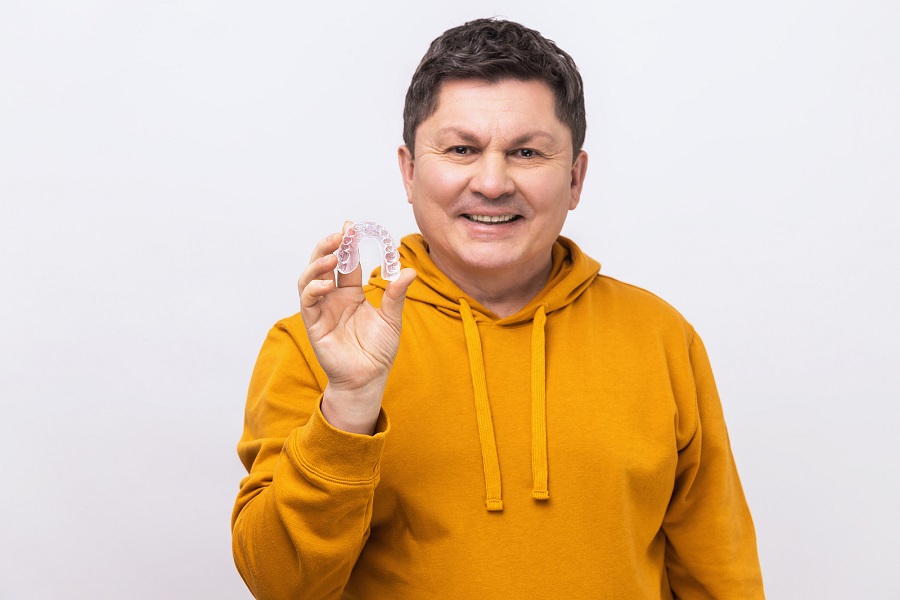Sudden Tooth Pain? Here’s What Might Be Causing It
Sep 05, 2023![This is a thumbnail image of blog 5 Surprising Benefits of Regular Dental Cleanings This is a thumbnail image of blog 5 Surprising Benefits of Regular Dental Cleanings]()
5 Surprising Benefits of Regular Dental Cleanings
Feb 09, 2023![This is a thumbnail image of blog Six Worst Foods For Oral Health This is a thumbnail image of blog Six Worst Foods For Oral Health]()
Six Worst Foods For Oral Health
Jan 14, 2023![This is a thumbnail image of blog Everything You Need to Know: Invisalign This is a thumbnail image of blog Everything You Need to Know: Invisalign]()
Everything You Need to Know: Invisalign
Apr 04, 2022![Root Canal Treatment in Pleasanton, CA Root Canal Treatment in Pleasanton, CA]()
The Benefits of Root Canal Treatment: Why Saving Your Tooth is Worth It
Oct 04, 2024

Maximizing Dental Implant Lifespan: The Essential Role of Osseointegration
Dental implants have transformed the way we think about tooth replacement. They offer a permanent solution that can restore not just your smile, but also your confidence and quality of life. However, the success of these implants hinges on one critical process: osseointegration. This biological phenomenon is where the implant fuses with your jawbone, creating a stable foundation for teeth that feel and function like natural ones.
Understanding how to maximize this process is essential for anyone considering dental implants in Pleasanton, CA. Whether you’re already on this journey or thinking about it, knowing key factors and techniques can significantly impact the lifespan of your implants. Let’s dive into what makes osseointegration so vital and how you can ensure long-lasting results from your dental investment.
Understanding Dental Implants and Osseointegration
Dental implants are artificial tooth roots that provide a sturdy foundation for fixed or removable replacement teeth. Made from biocompatible materials, these implants mimic the natural root structure and integrate seamlessly with your jawbone.
Osseointegration is the key to this success. It occurs when bone cells attach themselves to the implant’s surface, creating a strong bond. This process typically takes several months but is crucial for long-term stability.
Successful osseointegration means that once healed, your dental implants can withstand normal chewing forces just like natural teeth. The tighter the connection between bone and implant, the better it functions over time.
Understanding this relationship helps patients grasp why proper care and technique during surgery are essential. Each step of the journey matters in ensuring you get the most out of your investment in dental health.
Factors Affecting Osseointegration:
Osseointegration is a critical process that influences the success of dental implants. Several factors play a role in how well this occurs.
- First, patient health and habits significantly impact osseointegration. Conditions like diabetes or osteoporosis can hinder healing. Lifestyle choices, such as smoking, also pose challenges by reducing blood flow to the surgical site.
- The design and material of the implant are equally important. Implants made from biocompatible materials encourage better integration with bone. Surface texture and coating can enhance cellular attachment, fostering quicker healing.
- Surgical technique cannot be overlooked either. Precision during placement ensures optimal contact between the implant and surrounding bone. A skilled surgeon considers individual anatomy to maximize stability right from the start.
- Each factor intertwines to create an environment conducive to successful osseointegration, making it essential for anyone considering dental implants in Pleasanton, CA, to understand these elements thoroughly. Contact us to learn more.
Techniques for Maximizing Osseointegration:
- To maximize osseointegration, precision is essential. Employing advanced imaging techniques prior to surgery helps in planning the exact placement of dental implants. This reduces trauma and enhances integration with the surrounding bone.
- Another crucial technique is the use of surface coatings on implants. Textured surfaces or bioactive materials encourage faster bone growth around the implant, fostering a stronger bond.
- Post-operative care also plays a significant role. Patients should follow their dentist's recommendations closely, including dietary restrictions and oral hygiene practices.
- Regular check-ups ensure any potential issues are addressed early, promoting long-term success for dental implants in Pleasanton, CA. Additionally, applying gentle pressure during healing can stimulate the bone without compromising stability.
By focusing on these strategies, patients can significantly increase their chances of successful osseointegration while enjoying improved dental health for years to come.
Common Challenges in Achieving Successful Osseointegration
Achieving successful osseointegration can be a complex process. Many factors come into play, complicating the journey to optimal dental health.
- One primary challenge is bone quality. If the surrounding bone is too soft or not dense enough, it may struggle to fuse with the implant properly. This situation can lead to instability and discomfort.
- Infection poses another significant risk during this phase. Post-surgical infections can interfere with healing and directly affect how well the implant integrates with your jawbone.
- Additionally, patient habits like smoking can slow down recovery. Nicotine restricts blood flow, impacting healing time and success rates for osseointegration.
- Improper surgical techniques could hinder outcomes. An experienced oral surgeon plays a critical role in ensuring that implants are placed correctly for maximum integration potential.
How to Identify Implant Failure
Recognizing implant failure early can save you from further complications.
- One of the first signs is discomfort or pain around the implant site that doesn’t subside over time.
- Swelling and inflammation are also red flags. If your gums are unusually tender or bleeding, it’s worth investigating.
- Another indicator may be changes in bite alignment or difficulty when chewing. If your dental implant feels loose, don’t ignore it; this could signal serious issues with osseointegration.
- Regular check-ups with your dentist play a vital role in monitoring these aspects. They can identify potential problems before they escalate into more significant concerns.
- Stay vigilant about any unusual symptoms following your procedure to ensure lasting success with your dental implants in Pleasanton, CA.
Conclusion
The lifespan of dental implants is greatly influenced by the osseointegration process. Understanding this connection can significantly impact your oral health and overall well-being.
Choosing the right dental implant provider in Pleasanton, CA, who prioritizes successful osseointegration is crucial. They will consider factors such as your health habits and lifestyle, the materials used for the implants, and their surgical techniques. Each aspect plays a vital role in helping the bone integrate effectively with the implant.
By adopting healthy habits before and after surgery—like avoiding tobacco use and maintaining good oral hygiene—you can enhance your body’s ability to support these implants. Additionally, staying informed about potential challenges can prepare you better for any hurdles along the way.
Recognizing signs of implant failure early on allows for timely intervention. Regular check-ups with your dentist are essential to monitor both healing progress and potential issues that may arise over time.
Dental implants offer a long-term solution to missing teeth when their foundation is solidly built through effective osseointegration practices. With proper care and attention from both patients and professionals alike, these resilient solutions can provide years of reliable service while restoring function and confidence in one’s smile.
Please reach out to our dental practice in Pleasanton, CA, to have a consultation with our dentist, Dr. Dogra. Please call us at (925) 600-9006 or schedule an online consultation, and we’ll guide you further.
Office Hours
MON - WED9:00 am - 5:00 pm
THUClosed
FRI9:00 am - 5:00 pm
SAT8:30 am - 2:30 pm
SUNClosed





comments